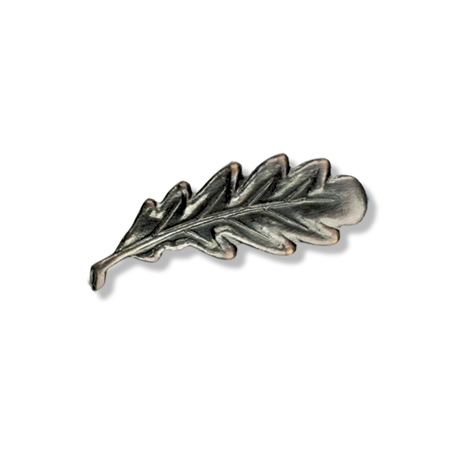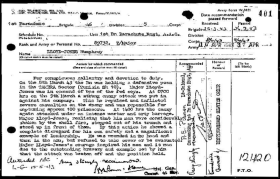Major Humphrey Lloyd-Jones MC MID was with the 10th Battalion, The Royal Welch Fusiliers, when it was converted to the parachute role. He attended Parachute Course 23 at RAF Ringway, 17 – 23 August 1942. Unusually Major Humphrey Lloyd-Jones served with The 6th Para Battalion, then The 1st Para Battalion, then back to The 6th Para Battalion.
The War Diary for the 6th Para Battalion had the following entry:
19 January 1943. Four Officers:- Major HL Jones, Capt. EM. Kinsey, Capt. D Lloyd-Davies, and Capt. SH Goss, and 68 OR’s departed to join Draft RNFFO.
The War Diary for the 1st Parachute Battalion, then in action, in Tunisia, had the following entry:
"16 February 1943. We are to get a Major. Lloyd-Jones. He took over command of ‘S’ Company, and was heavily involved in the battles of ‘Cork Wood’, in the Tamera area, in March 1943."
Humphrey was awarded a Military Cross for his actions in North Africa, which was announced in the London
Gazette on the 18 May 1943.
Citation:
"For conspicuous gallantry and devotion to duty.
On the 8 March 43 the Bn was holding a defensive posn in the TAMERA Sector (Tunisia Sh 10).
Major Lloyd-Jones was in command of one of the fwd coys. At 0700 hrs on the 9 March a strong enemy attack was put in against his company. This he repulsed and inflicted severe casualties on the enemy and was responsible for capturing approx. 100 prisoners. At 1400 hrs the enemy again attacked under an intense mortar and arty barrage. Major Lloyd-Jones, realising that his men were considerably shaken by the shell fire, stepped out of his trench and stood up in front of them. By this action he showed a complete disregard for his own safety and a magnificent example of leadership. He was wounded in the head and then in the arm, but refused to take cover or be evacuated. Major Lloyd-Jones’s courage inspired his men and it was due to the outstanding bravery and example set by him that the attack was beaten off and the position held."
He went with the 1st Parachute Battalion to Italy as part of Operation ‘Slapstick’, in September 1943, as the Officer Commanding, Headquarter Company. On the 16 September 1943 he was posted back to the 6th Parachute Battalion, where he took over command of ‘B’ Company. He commanded ‘B’ Company on Operation ‘Dragoon’, the jump into Southern France, on the 15 August 1944, and was one of the few sticks of men to land accurately on DZ ‘O’ near Le Mitan. The drop took place at 0650 hours, and by 0900 hours ‘B’ Company had moved into the village of La Motte and secured it. After being in action in and around the area of La Motte for a few days the battalion was withdrawn, and eventually boards seaborne transport on the 26 August, for the journey back to Italy.
He also took part in the parachute drop at Megara in Greece, in October 1944. He was Mentioned in Despatches, which was announced in the London Gazette on the 11 January 1945.
He was still with the 6th Parachute Battalion when it was sent to Palestine, in January 1946, and was by this time the Second-in-Command. The battalion remained in Palestine until the 24 January 1947, when it sailed, with the rest of the 2nd Parachute Brigade Group, back to the United Kingdom.



Latest Comments
There are currently no comments for this content.
Add Comment
In order to add comments you must be registered with ParaData.
If you are currently a ParaData member please login.
If you are not currently a ParaData member but wish to get involved please register.